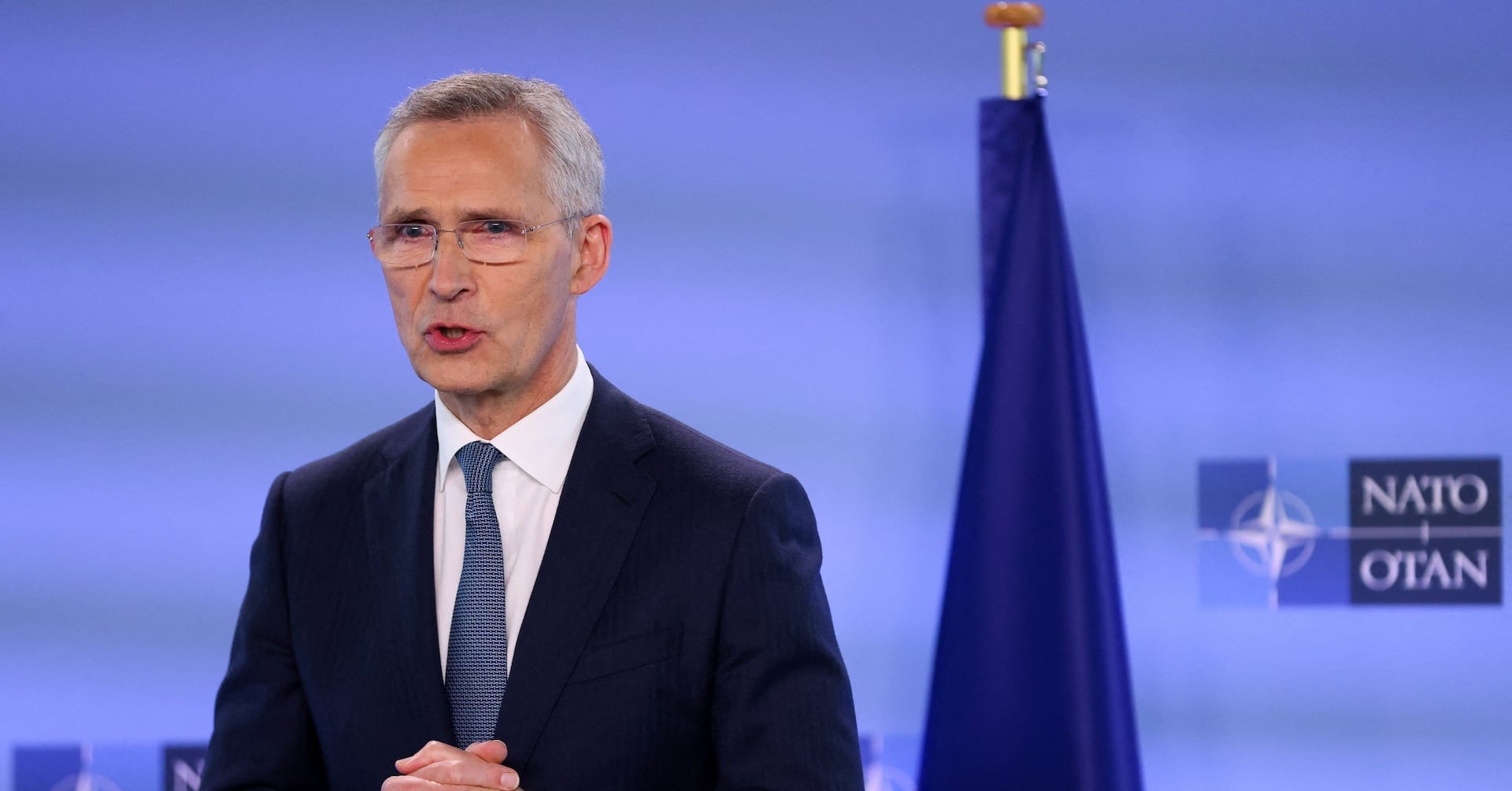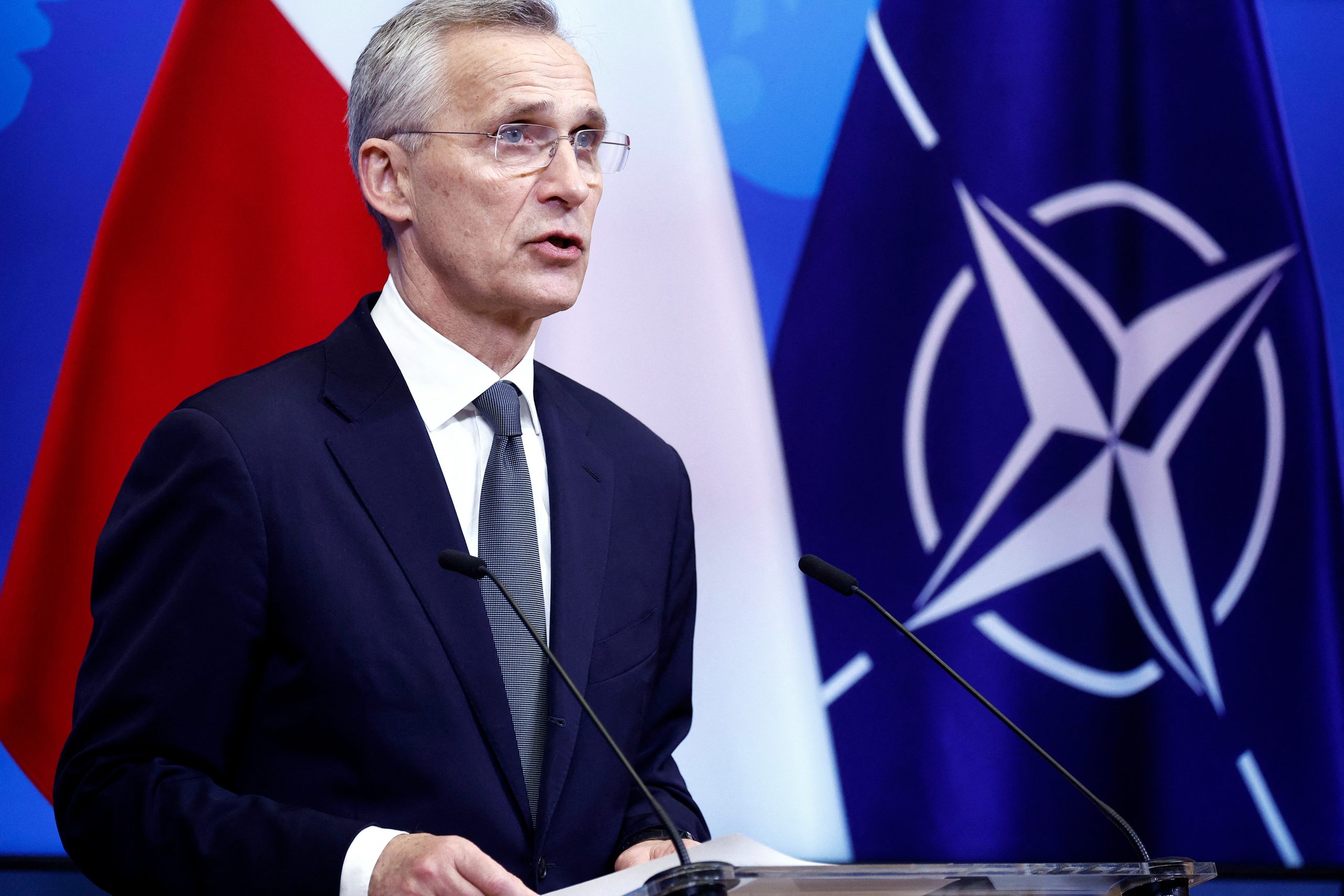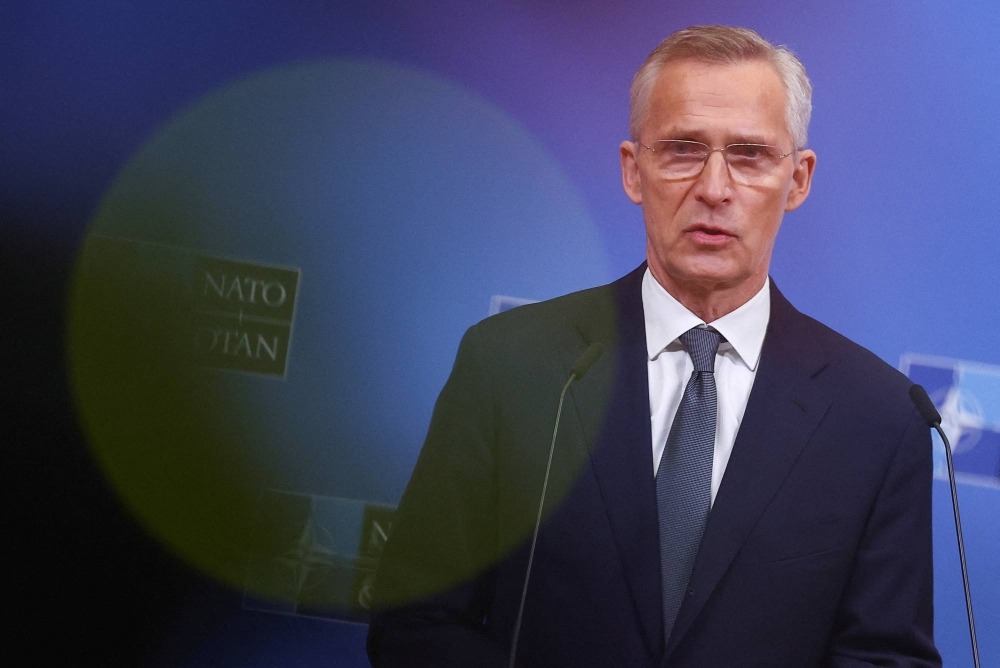NATO foreign ministers gathered on Wednesday to strategize on establishing long-term military support for Ukraine, including a remarkable proposal for a 100 billion euro ($107 billion) fund over five years.
This initiative, championed by NATO Secretary General Jens Stoltenberg, aims to ensure a stable and predictable support framework for Ukraine amidst its conflict with Russia.
Aa more structured form of aid represents a shift from relying on ad-hoc contributions to solidifying NATO’s commitment through multi-year pledges.

NATO Secretary General Jens Stoltenberg (Credits: Reuters)
Stoltenberg emphasized the importance of transforming the nature of support to be more reliable and less dependent on individual contributions, highlighting a strategic pivot towards longer-term assistance. Although specific funding levels were not disclosed, the objective is to finalize this plan at the NATO summit in July.
One of the driving forces behind these proposals is to mitigate the risk of potential reductions in U.S. support, mainly if Donald Trump, known for his unpredictability in foreign aid, were to reassume the presidency.
Traditionally, NATO has limited its involvement to non-lethal aid to avoid escalating tensions with Russia, with member states offering military support on an individual basis.
However, there’s a growing consensus within NATO that establishing a sustainable mechanism for military aid to Ukraine is overdue, and NATO is uniquely positioned to lead this effort.
Yet, the feasibility of the 100 billion euro target and its funding mechanism remains to be seen, as NATO decisions require unanimous agreement among its 32 members.

NATO Head (Credits: The Globe and Mail)
German Foreign Minister Annalena Baerbock voiced support for the initiative, advocating for “reliable, long-term structures” for disbursing aid to Ukraine. Latvian Foreign Minister Krisjanis Karins suggested that member contributions could be tied to a percentage of GDP, marking a pragmatic approach to funding the initiative.
Hungary expressed reservations, with Foreign Minister Peter Szijjarto emphasizing the country’s stance against proposals that could potentially escalate NATO’s involvement in the conflict. Belgian Foreign Minister Hadja Lahbib mentioned that discussions would focus on the practicality of Stoltenberg’s proposal and the contributions of different members.
In the backdrop of these discussions, U.S. Secretary of State Antony Blinken underscored NATO’s intention to create a framework that could facilitate Ukraine’s eventual membership in the alliance. While NATO maintains that Ukraine’s membership cannot proceed amid ongoing conflict with Russia, it affirms Ukraine’s future inclusion in the coalition.























